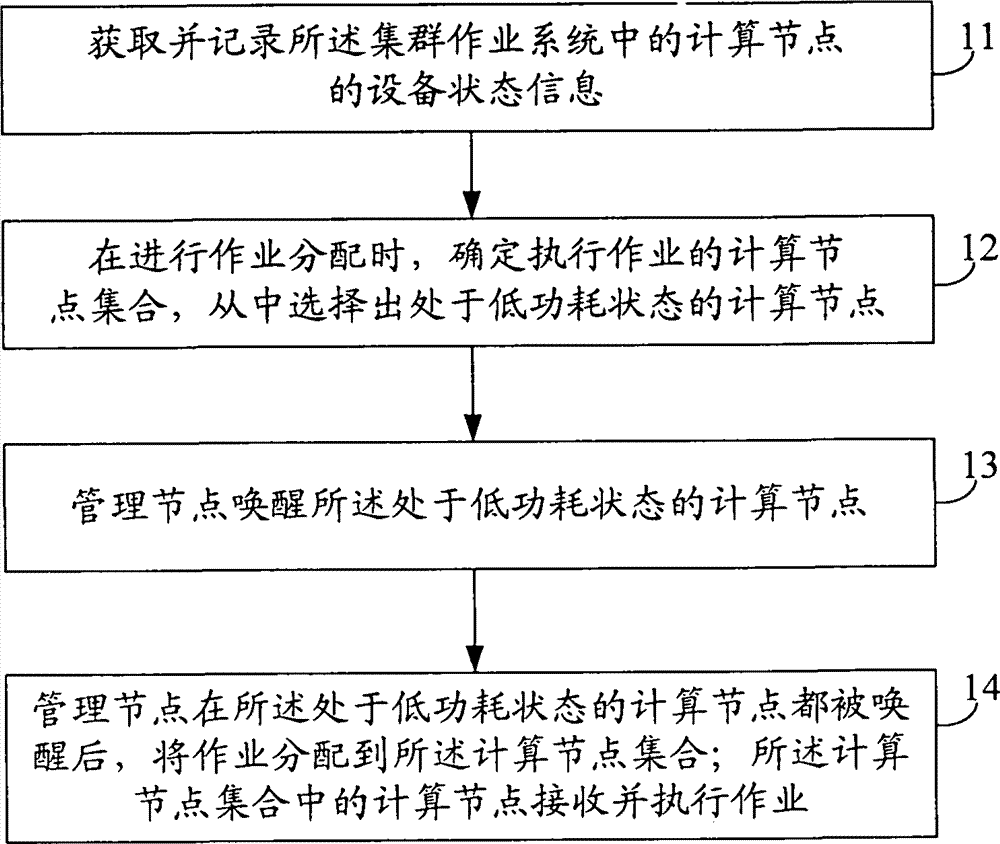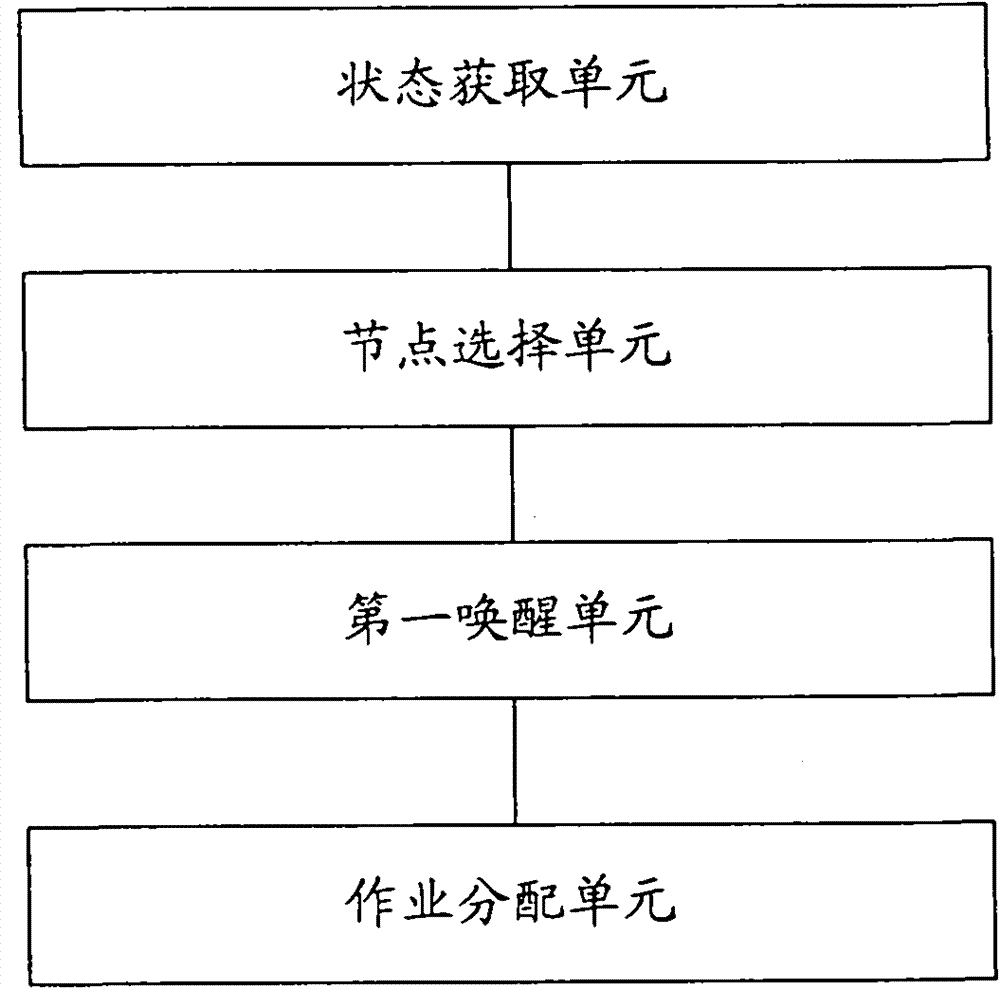Method for reducing running power consumption of cluster job system, node and system
An operating system and low power consumption technology, which is applied in transmission systems, digital transmission systems, and energy consumption reduction. It can solve the problems of not providing energy saving and not considering the sleep of computing nodes, so as to save system power consumption and improve job execution efficiency. , the effect of saving the overall power consumption
- Summary
- Abstract
- Description
- Claims
- Application Information
AI Technical Summary
Problems solved by technology
Method used
Image
Examples
Embodiment 1
[0082] Please refer to figure 1 The method for reducing the power consumption of the cluster operation system described in this embodiment is applied to the management node in the cluster operation system, and specifically includes the following steps:
[0083] Step 11, the management node acquires and records the device status information of the computing nodes in the cluster operating system, wherein the computing nodes will enter a low power consumption state and report to the management node when the predetermined local power consumption policy is satisfied own device status.
[0084] In order to achieve the purpose of saving power consumption, in this embodiment, the computing node can control the device status of the computing node according to the local predetermined power consumption policy. For example, when the cluster operation system is not busy, if the computing node If no job is received after the timeout, the computing node will be controlled to enter a low pow...
Embodiment 2
[0109] Please refer to image 3 The method for reducing the power consumption of the cluster operation system described in this embodiment is applied to the first computing node in the cluster operation system, and specifically includes the following steps:
[0110] Step 31, when the first computing node satisfies the pre-established power consumption strategy, control the computing node to enter a low power consumption state, and notify the management node in the cluster operation system of the current device status of the computing node.
[0111] Here, there are many ways to control the computing node to enter the low power consumption state, which can be realized by using third-party software or various existing technologies. For example, under the LINUX system, the computing node can be controlled to enter a low power consumption state by means of swsusp, TuxOnIce, or uswsusp.
[0112] Step 32, the first computing node receives a first wake-up command sent by the manageme...
Embodiment 3
[0134] This embodiment provides a method for reducing the power consumption of a cluster operation system. The cluster operation system includes a management node and a plurality of computing nodes. The method includes:
[0135] Step 51 , when the computing node in the cluster operation system meets a predetermined power consumption policy, control itself to enter a low power consumption state, and notify the management node of its current device state.
[0136] Step 52, the management node obtains and records the device status information of the computing node.
[0137] Step 53 , the management node determines a set of computing nodes for executing the job when assigning a job, and selects a computing node in a low power consumption state from the set of computing nodes according to the device state information.
[0138] Step 54, the management node wakes up the computing node in the low power consumption state to the computing node in the low power consumption state.
[013...
PUM
 Login to View More
Login to View More Abstract
Description
Claims
Application Information
 Login to View More
Login to View More - R&D
- Intellectual Property
- Life Sciences
- Materials
- Tech Scout
- Unparalleled Data Quality
- Higher Quality Content
- 60% Fewer Hallucinations
Browse by: Latest US Patents, China's latest patents, Technical Efficacy Thesaurus, Application Domain, Technology Topic, Popular Technical Reports.
© 2025 PatSnap. All rights reserved.Legal|Privacy policy|Modern Slavery Act Transparency Statement|Sitemap|About US| Contact US: help@patsnap.com



